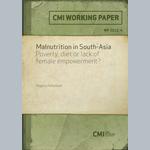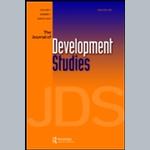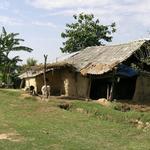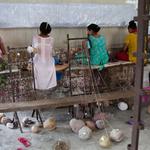Economic growth does not eradicate undernourishment
In 1996, 57 % of the children in Nepal were undernourished. Ten years later, almost 50% of Nepalese children showed signs of undernourishment. In the same period, the region experienced unprecedented economic growth.
- The number of undernourished children is surprisingly stable and higher than expected. Research shows that economic growth does not eradicate undernourishment, says Magnus Hatlebakk, senior researcher at Chr. Michelsen Institute.
Women’s position in society decisive
Hatlebakk has studied the prevalence of undernourishment among 470 children in Nepal. He has compared well-nourished children with undernourished children in families with different economic statuses. Half of the youngest children in these families were too short for their age, something which can be explained with undernourishment. These findings correspond to the situation in South Asia as a whole.
-Economic prosperity is not enough to eradicate undernourishment. Other measures need to be implemented. Most importantly, women’s status needs to be strengthened. Female empowerment through increased literacy is one important measure, says Hatlebakk.
Research shows that women who read and write provide more nourishing food to their children. They are able to read grocery declarations and to understand the information in health campaigns. Literacy is also an indicator of a person’s perception of the importance of education.
-Literacy is attainable for most people in Nepal. The poorest segments of the population find it challenging to spend both money and time on education, but for the rest, it is feasible to send their children to school if only for two or three years, says Hatlebakk.
Breaking out
Undernourishment is an unevenly distributed problem in Nepal. Undernourishment is closely connected to traditional views on women’s position in society. Female empowerment and independence depend to a large extent on ethnicity and castes. Undernourished children are predominantly in the lowlands in communities where women traditionally stay at home. Yet, here we see that the poor women frequently have better nourished children than more affluent women. This can be explained by the fact that these women are forced to work outside their homes. Poverty pushes them into the labour market where they are exposed to the social values of other groups, and adapt better nutritional habits.
-A more egalitarian labour market would undoubtedly reduce the prevalence of undernourishment, says Hatlebakk.
Publications

Malnutrition in South-Asia. Poverty, diet or lack of female empowerment?

Triadic power relations in rural Nepal
Magnus Hatlebakk
Projects

Gender of children, education and occupational choice in Nepal

Long term poverty dynamics in Nepal

